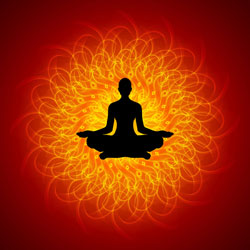 The human body is a dynamic mechanism. It consists of 7 energy centers – the energy for survival of the body and the mind both. These energy centers look like “Chakra” (wheel). These centers were named as Chakra because of the circular shape to the spinning energy centers which exist in our metaphysical body. They are located parallel to the spine along the front and back of the body. Each chakra has a number of specific qualities that correspond to the enhancement of energy from the very basic level such as identity of self to the highest level of spirit as the enlightenment. We must make an attempt of studying them to master each chakra’s essence in unity of body and mind to lead a brilliant, healthy and happy life. To be aware of your 7 energy centers/chakras is like having key to do well in life easily.
The human body is a dynamic mechanism. It consists of 7 energy centers – the energy for survival of the body and the mind both. These energy centers look like “Chakra” (wheel). These centers were named as Chakra because of the circular shape to the spinning energy centers which exist in our metaphysical body. They are located parallel to the spine along the front and back of the body. Each chakra has a number of specific qualities that correspond to the enhancement of energy from the very basic level such as identity of self to the highest level of spirit as the enlightenment. We must make an attempt of studying them to master each chakra’s essence in unity of body and mind to lead a brilliant, healthy and happy life. To be aware of your 7 energy centers/chakras is like having key to do well in life easily.
Root Chakra or the Muladhar Chakra: This first Chakra is called Root or Muladhar because it supports the body. This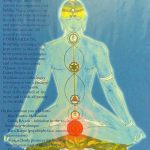 chakra is located at the base of the spine. This energy centre tells us to accept our body, feel it, validate it and love it. This energy center is related with our “identity” “I am”. The first chakra is typically about survival. This chakra consists of masculine energy. It gives us security, vitality, stability, individuality and of course courage. This chakra is associated with our activity to eat. Protein is the food of this chakra. When we eat well-balanced food, our body grows strong and supports the other functions. When the first chakra is malfunctioning, it manifests into obesity.
chakra is located at the base of the spine. This energy centre tells us to accept our body, feel it, validate it and love it. This energy center is related with our “identity” “I am”. The first chakra is typically about survival. This chakra consists of masculine energy. It gives us security, vitality, stability, individuality and of course courage. This chakra is associated with our activity to eat. Protein is the food of this chakra. When we eat well-balanced food, our body grows strong and supports the other functions. When the first chakra is malfunctioning, it manifests into obesity.
Through this first chakra, we understand and heal our body. A well-functioning root (first) chakra opens us to our power and stability and allows us to grow. We are grounded, and this grounding brings us rest and solidity and stillness. The color associated with this chakra is RED.
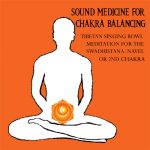 Sacral Chakra or the Svadhisthana Chakra: Its element is water. This chakra is associated with our emotions of sexuality, desires, creation, and procreation. Socialization is also a function of the sacral chakra. The expression associated with this chakra is “I feel” The energy associated with this chakra is both emotional and sensual. The location of this chakra is in the area of the genitals and womb. The second chakra is one of feminine energies. Besides both sexuality and pleasure associated with this chakra, it centers the desire of nurturing, nourishment, warmth and touch.
Sacral Chakra or the Svadhisthana Chakra: Its element is water. This chakra is associated with our emotions of sexuality, desires, creation, and procreation. Socialization is also a function of the sacral chakra. The expression associated with this chakra is “I feel” The energy associated with this chakra is both emotional and sensual. The location of this chakra is in the area of the genitals and womb. The second chakra is one of feminine energies. Besides both sexuality and pleasure associated with this chakra, it centers the desire of nurturing, nourishment, warmth and touch.
The malfunctioning of this chakra leads to kidney and bladder disorders. Its color is ORANGE.
Solar Plexus or Manipura Chakra: The third chakra is the Manipura chakra, which means “lustrous gem.” It is located in the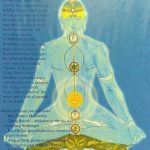 area of the navel near to the solar plexus. Its function is lending willpower. The expression associated with this chakra is “I do.” Its element is fire.
area of the navel near to the solar plexus. Its function is lending willpower. The expression associated with this chakra is “I do.” Its element is fire.
It is connected to the pancreas of body. It affects are the pancreas, adrenals, digestive system and muscles. When it malfunctions, it results into problems related to the ulcers, diabetes, and hypoglycemia.
The solar plexus chakra gives us the sense of “belonging.” It grounds us firmly in life. Its color is YELLOW.
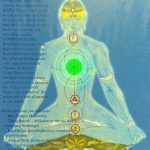 The Anahata or the Heart Chakra: It is located near the heart. Its function is love. Its element is air. The inner layer of this chakra is compassion and love. The expression associated with this chakra is “I love.” The gland associated with the heart chakra is the thymus. It influences the body parts – the lungs, heart, arms and hands. When this chakra malfunctions it results into physical problems such as asthma, high blood pressure, heart disease and lung disease etc.
The Anahata or the Heart Chakra: It is located near the heart. Its function is love. Its element is air. The inner layer of this chakra is compassion and love. The expression associated with this chakra is “I love.” The gland associated with the heart chakra is the thymus. It influences the body parts – the lungs, heart, arms and hands. When this chakra malfunctions it results into physical problems such as asthma, high blood pressure, heart disease and lung disease etc.
We love because of the energy of this fourth chakra. The heart chakra allows us of joyous acceptance in life. Its proper functioning gives us deep peace and allows us to be in harmony with our self. Its color is GREEN.
Visuddha or Throat Chakara: Visuddhameans “purification.” It is located at the area of the throat. Its function is related to communication and creativity. The glands related to this chakra are thyroid and parathyroid. The other body parts related to the fifth chakra are the neck, shoulders, arms and hands. The expression related to this chakra is “I speak”. The sense associated with it is hearing. When this chakra malfunctions, we encounter physical problems such as sore throat, stiff neck, colds, thyroid problems and hearing problems. Its color is BLUE.
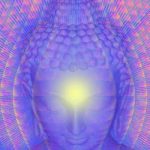 Ajna or Third eye chakra: In sanskrit Ajana means to know. It also means “to perceive” or “to command.” It is located in the brain. The element associated with Ajna is light. Its function is seeing and intuition. The expression related with this chakra is “I see” The body parts affected by the sixth chakra are the pineal gland and the eyes. Malfunction of the sixth chakra can manifest in blindness, headaches, nightmares, eyestrain and blurred vision. This chakra is related to the mental state. One finds inner vision as part of this chakra, as well as actual seeing and outer vision. Therefore, mystical, magical and clairvoyant abilities are also associated with this sixth chakra. The color of sixth chakra is INDIGO.
Ajna or Third eye chakra: In sanskrit Ajana means to know. It also means “to perceive” or “to command.” It is located in the brain. The element associated with Ajna is light. Its function is seeing and intuition. The expression related with this chakra is “I see” The body parts affected by the sixth chakra are the pineal gland and the eyes. Malfunction of the sixth chakra can manifest in blindness, headaches, nightmares, eyestrain and blurred vision. This chakra is related to the mental state. One finds inner vision as part of this chakra, as well as actual seeing and outer vision. Therefore, mystical, magical and clairvoyant abilities are also associated with this sixth chakra. The color of sixth chakra is INDIGO.
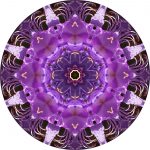 The Crown or the Sahasrara chakra: In Sanskrit Sahasrara means “thousand fold.” It is located just the central of the top of the head. The seventh chakra represents thought, and its materialization is information. Its function is to understand, and the psychological state that it creates is bliss. It is associated with the expression of “I understand” and its color is VIOLET.
The Crown or the Sahasrara chakra: In Sanskrit Sahasrara means “thousand fold.” It is located just the central of the top of the head. The seventh chakra represents thought, and its materialization is information. Its function is to understand, and the psychological state that it creates is bliss. It is associated with the expression of “I understand” and its color is VIOLET.
The gland affected by this chakra is the pituitary. Other body parts affected by the seventh chakra include the cerebral cortex and the central nervous system. When this chakra malfunctions it can result in depression, isolation, confusion, boredom, apathy and the inability to learn or comprehend. The seventh chakra is associated with greater consciousness. After all life is not only about physical existence it is about our minds and soul as well. We are part of the collective consciousness. We are part of the Universe – the Infinite. The Third Eye Chakra and Crown chakra connects us to the immeasurable universal energy.
 I connect the functions of seven chakras to Abraham Maslow’s Need Hierarchy. Maslow wanted to understand what stimulates desires in people. He believed that individuals possess a set of motivation systems distinct to rewards. Our diverse needs are connected to physiological, biological, and mind; therefore I have hypothetically connected them to the 7 chakras. Maslow (1943) stated that people are motivated to achieve definite needs; some of them are very basic such as sleep, hunger, air, thirst, warmth and sex – Muladhar Chakra. Then comes the safety needs, wanting to be secured financially, socially – Sacral or Swadhisthan Chakra. After safety and security comes social affiliation need such as work group, family, affiliation, and relationships etc – Solar Plexus or Manipur chakra. The deep desire of man to love and to be loved which is also a part of Maslow’s social need centers in Heart or Anahat Chakra. Then comes self esteem which means achievement and mastery, independence etc which man achieves through communication – Throat or Visudha Chakra. Status, dominance, prestige, managerial responsibility comes out of intuitiveness – Third Eye or Ajana Chakra. And the last self actualization which means realizing personal potential, self-fulfillment and enlightenment in life; which I would call the zenith in life would relate to Crown or Shasrara Chakra.
I connect the functions of seven chakras to Abraham Maslow’s Need Hierarchy. Maslow wanted to understand what stimulates desires in people. He believed that individuals possess a set of motivation systems distinct to rewards. Our diverse needs are connected to physiological, biological, and mind; therefore I have hypothetically connected them to the 7 chakras. Maslow (1943) stated that people are motivated to achieve definite needs; some of them are very basic such as sleep, hunger, air, thirst, warmth and sex – Muladhar Chakra. Then comes the safety needs, wanting to be secured financially, socially – Sacral or Swadhisthan Chakra. After safety and security comes social affiliation need such as work group, family, affiliation, and relationships etc – Solar Plexus or Manipur chakra. The deep desire of man to love and to be loved which is also a part of Maslow’s social need centers in Heart or Anahat Chakra. Then comes self esteem which means achievement and mastery, independence etc which man achieves through communication – Throat or Visudha Chakra. Status, dominance, prestige, managerial responsibility comes out of intuitiveness – Third Eye or Ajana Chakra. And the last self actualization which means realizing personal potential, self-fulfillment and enlightenment in life; which I would call the zenith in life would relate to Crown or Shasrara Chakra.
When one need is fulfilled, the next need arises, when that is fulfilled the next; thus a person seeks to fulfill need after need which is unending. The needs chain goes on till man survives.
Maslow’s (1943, 1954) hierarchy of needs includes five motivational needs, often depicted as hierarchical levels. If the needs are not met with or if they are not satisfied they become stronger, for example if a person does not sleep for a night, he will become restless and agitated and will find ways to go off to sleep somewhere, or the longer a person goes without food the more hungry he will become.
Maslow said that one must satisfy lower level basic needs which are very basic for survival before progressing on to meet higher level growth needs. In our bodies the lower chakras are associated with fundamental emotions and needs; hunger, thirst, sleep, procreation, security etc; for the energy here vibrates at a lower frequency and therefore they are intense in nature. The finer energies of the upper chakras correspond to our higher mental and spiritual aspirations and faculties. The throat is related to creativity, insight, synthesis; the third eye to knowingness, perception and intuition; the crown chakra to divinity, wisdom and spirit.
Every person is capable and has the desire to move up the hierarchy toward a level of self-actualization. Unfortunately, progress is often disrupted by failure to meet lower level needs. Our constant struggle of earning a decent living and meeting our needs in that regard (food, clothing and shelter) causes us to swing between levels of the hierarchy at lower levels.
Most significant point to note is that Maslow noted only one in a hundred (I say one in thousands) person become fully self-actualized. Isn’t that abysmal?













































